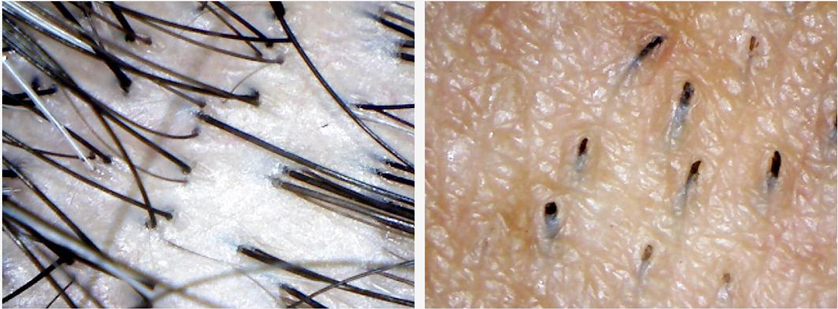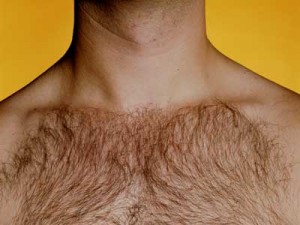Can Facial Hair Be Used On The Scalp?
Monday, February 6th, 2012The method of using hair from other parts of the body to be placed into the scalp has been used for several years now. The Unfortunate thing is the change which occurs in the life cycle of body hair makes body hair the last option for scalp hair restoration. Body hair tends to have a long resting phase and short growth phase, meaning the majority of the hair which was transplanted will stay in the resting phase and have no visible hair growth.
When seeing a side-by-side comparison of the scalp hair (left) vs. the facial hair (right), there is an obvious difference in the density of hair on the surface area and the average number of hairs in each follicular unit. Scalp hair is denser with more hair per grafts (over 2-4 hair/graft) while beard hair has less density with fewer hair per grafts (1-2 hair/graft)
On the other hand, mustache and beard hair has a shorter resting phase and longer growth phase. Because of this, men can grow their facial hair very long. For most people, facial hair is much thicker than scalp hair. Thicker hair could be translated as more bulk of hair after hair transplantation. Both thicker hair shafts and longer growth phase make beard hair a better option for scalp hair restoration in comparison to body hair transplant from other areas.
Unfortunately, there are two issues with beard hair restoration. The first is the fact they are very sparse, and removing hair only needs to be done through a strip procedure. The second regarding using facial hair for scalp transplant is follicular units found on the face have a fewer number of hairs per unit, which means there is less hair per grafts removed with FUE techniques.
Beard transplants are gaining popularity annually, and the newest technology in hair transplantation allows for hair loss doctors to use scalp hair for transplanting to the balding area in people which do not have good quality facial hair. Modern technology continues to advance the art and science of hair restoration further into new realms of possibilities, with an large annual growth reported yearly.


